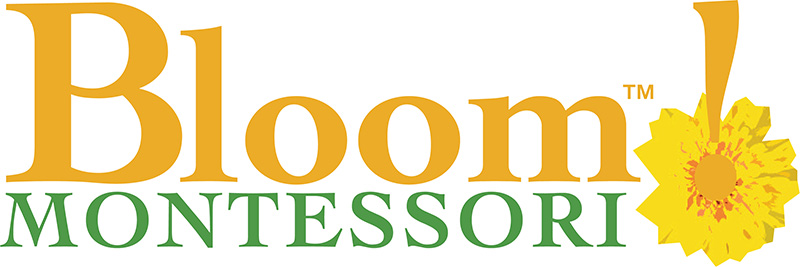Bloom! Curriculum
Our Curriculum
The Montessori classroom is designed to stimulate and entice children to engage in growth-promoting activities while cultivating and protecting their natural love of learning. Each day provides opportunities for communal activities, independent work, and unstructured play. Perhaps the most defining characteristic of an authentic Montessori classroom is the three hour period of uninterrupted work. During this time, children work at their own pace by freely choosing among carefully selected activities that are designed to foster their development and intellectual growth. Adults and children alike respect a child’s concentration, need for repetition, and desire for independence. Group activities arise spontaneously according to the interests of the children, who form freely chosen work groups.
To learn more about our curriculum, please visit our blog.
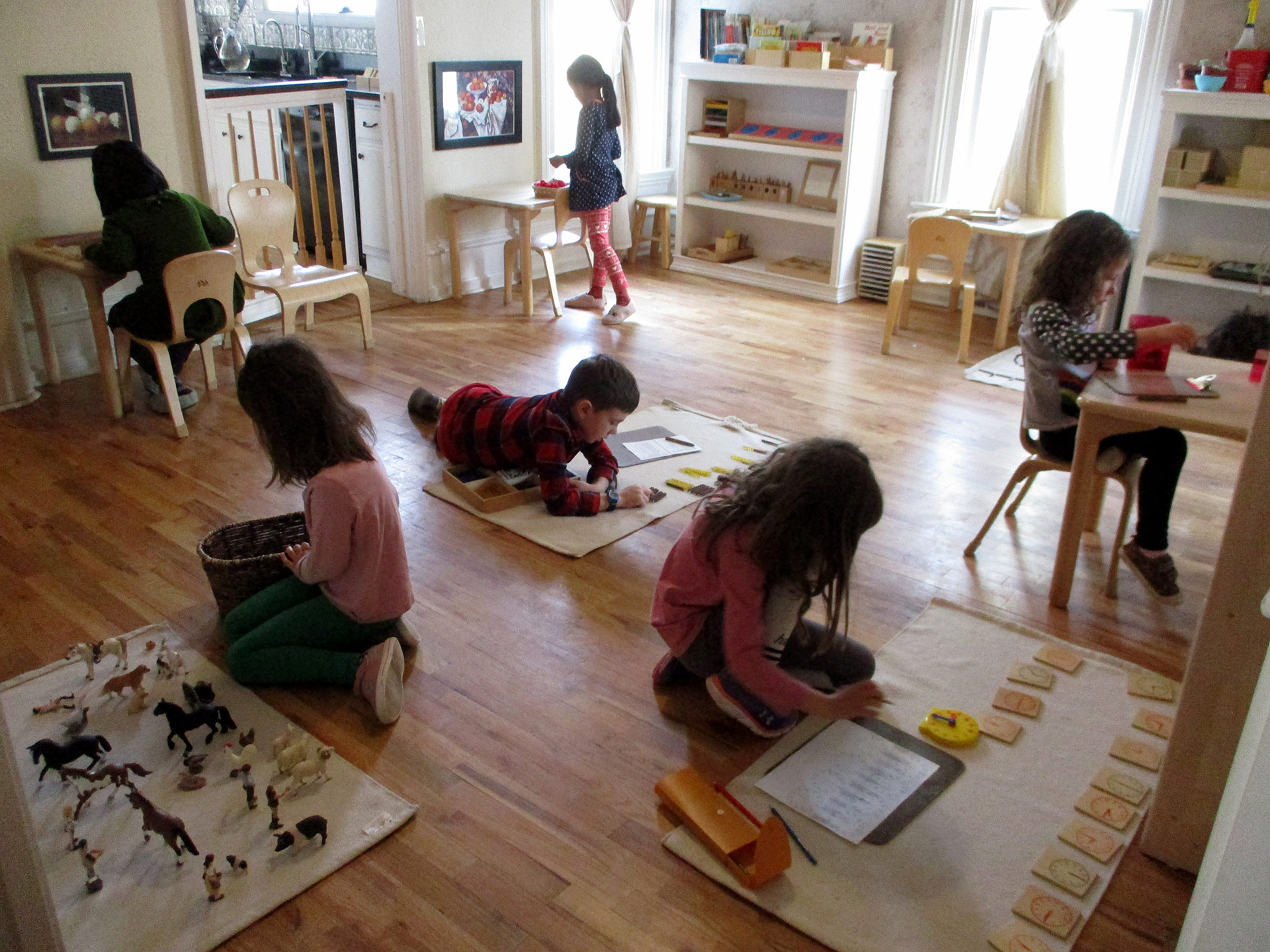
The three to six environment is divided into the following areas:
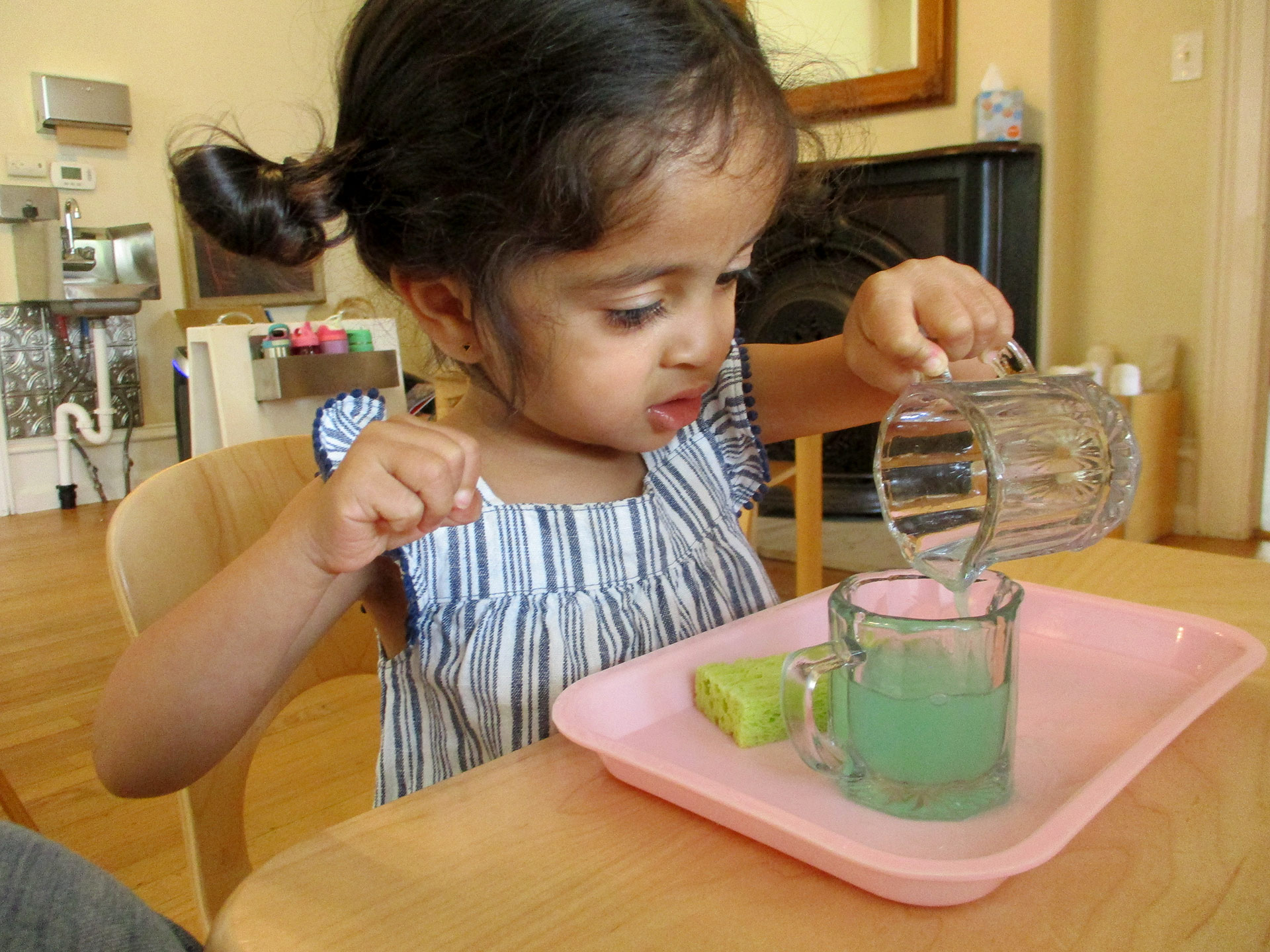
Practical Life
For young children, there is a strong desire to imitate the activity of adults. Your child’s teacher provides a model of language, activity, and manners that are worthy of imitation. Practical life activities like washing dishes, setting a table, polishing silver, arranging flowers, or peeling vegetables provide children with a sense of accomplishment, independence, and an authentic sense of self- esteem. These tasks also allow children to develop their fine and gross motor coordination, gradually lengthen their span of concentration, follow an extended sequence of directions, and acquire good work habits.
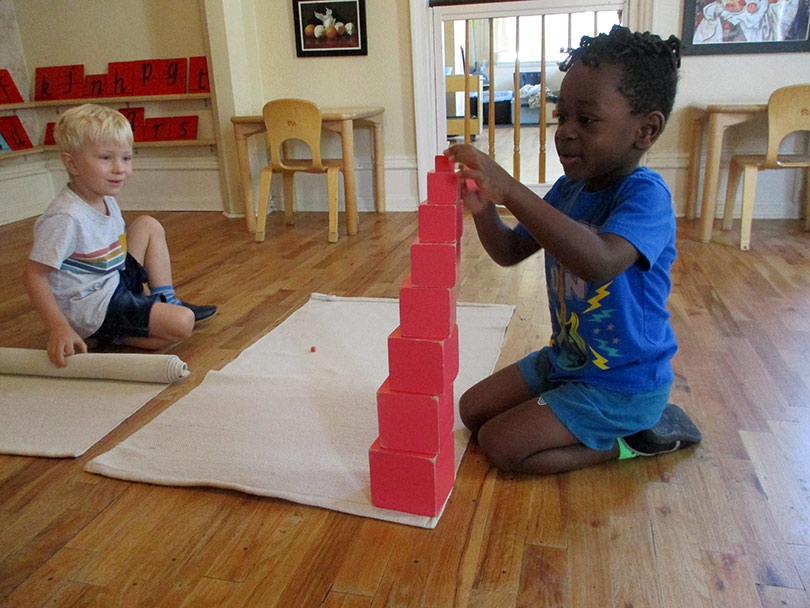
Sensorial Area
Maria Montessori was one of the first researchers to recognize the importance of developing a child’s senses (the importance of which is being confirmed by contemporary research into sensory integration disorders which has found that without adequate sensory stimulation at this age children’s neural pathways do not develop in ways that enable them to retain and access information effectively). Our classroom provides children with numerous unstructured activities in which they can experiment with different tactile sensations (finger painting, sand and water tables, playdough, etc) in addition to formal lessons in which they learn to discriminate between objects and to describe, classify, and categorize their world according to the physical properties of quantity, weight, temperature, size, form, and color. Children hold, explore, and compare tablets of differing weights, cloths of differing textures, blocks of differing length, width, and height, and containers of differing temperatures and pressures. They practice comparing tastes (learning to characterize foods as salty, sweet, spicy, and bitter) and scents. As they do so, they are learning about the concepts that will orient them in their world, the adjectives used to describe such experiences, and developing a rich, descriptive vocabulary.

Language Area
We seed the child’s linguistic development by modeling rich, varied, and precise language. We listen to children with rapt attention and encourage them to utilize more sophisticated speech patterns and vocabulary. The children also gather daily for stories, songs, finger plays, and poems. Children are taught the phonetic sounds of consonants and blends in order to facilitate reading. We teach children to write using the Getty-Dubay Italic handwriting system, a beautiful script and a link between cursive and print. Additionally, older children (who do not nap) participate in the kindergarten- first grade level of the Junior Great Books Program, an acclaimed reading comprehension program based upon the classics that was developed at the University of Chicago. This program provides children with the experience of speaking persuasively, engaging in literary discussions, critically examining pieces of literature, and utilizing textual evidence to support their interpretations.
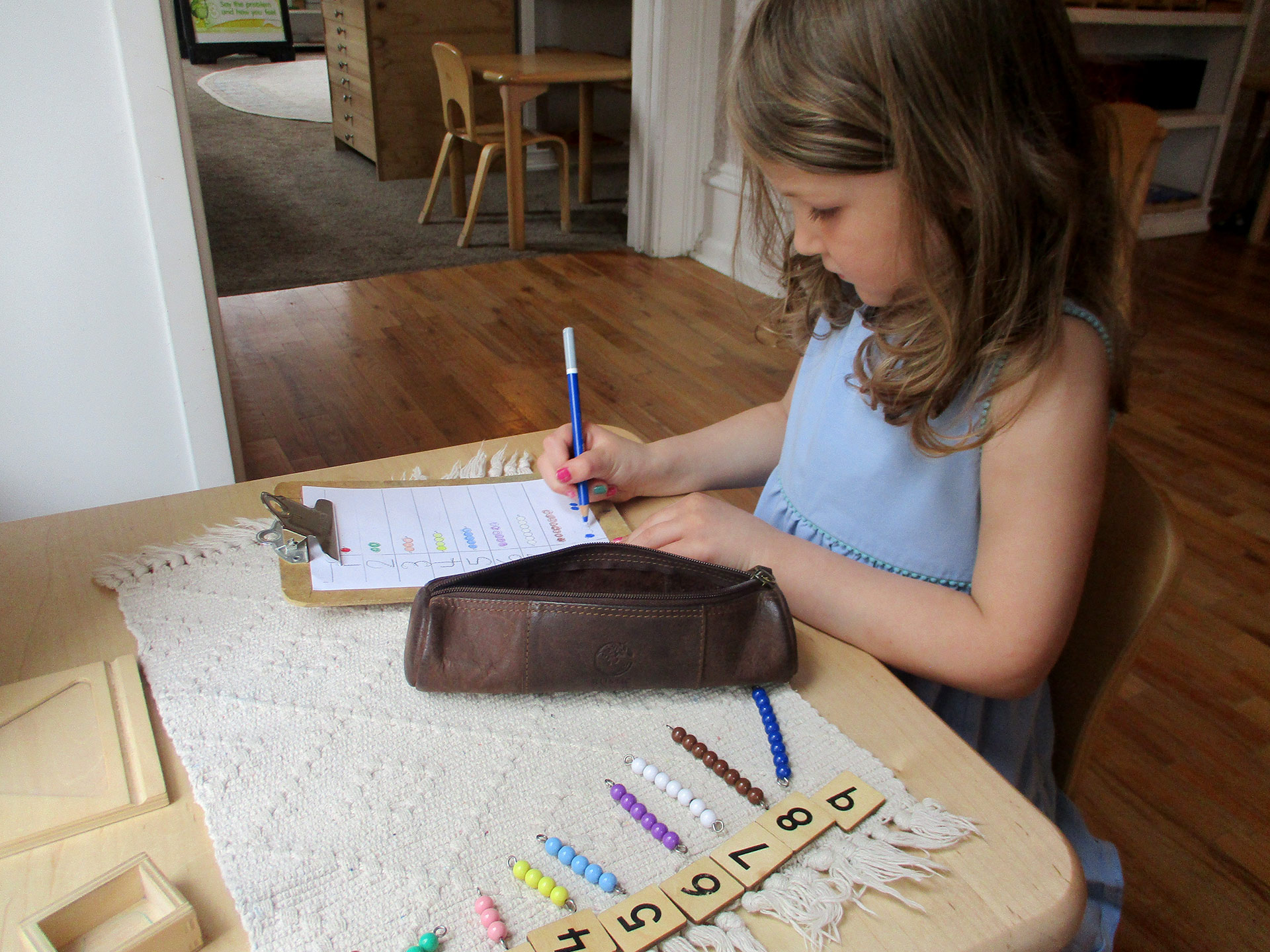
Mathematics

Geography
Geography instruction is provided through the use of globes, puzzles, maps that children create themselves, modeling common land forms (isthmus, peninsula, island, etc) with clay and water, reading stories about the culture and livelihoods of people in different countries, cooking and sampling the cuisine of different cultures, and making models of crowning architectural achievements or architectural styles.

History
Children at this age are most interested in what is personal. As a result, they are taught history through the use of timelines and biographies of exemplary people. Children construct their own personal timelines in order to make the notion of the past, present, and future more concrete. Grandparents are invited to come on Grandparent’s Day to share stories and family history with the children.

Music

Science

Play Time

Rest & Regeneration
Want more information?
Schedule a tour or simply request to speak to one of our owners for more details!
